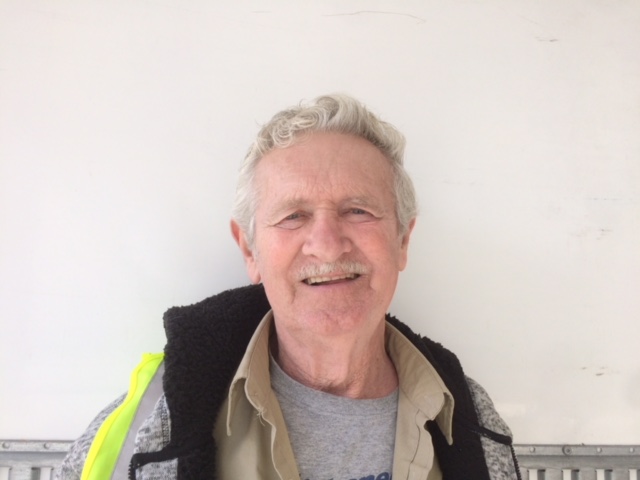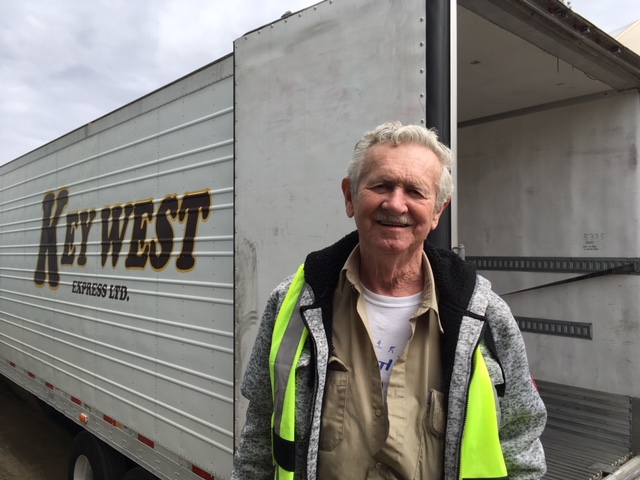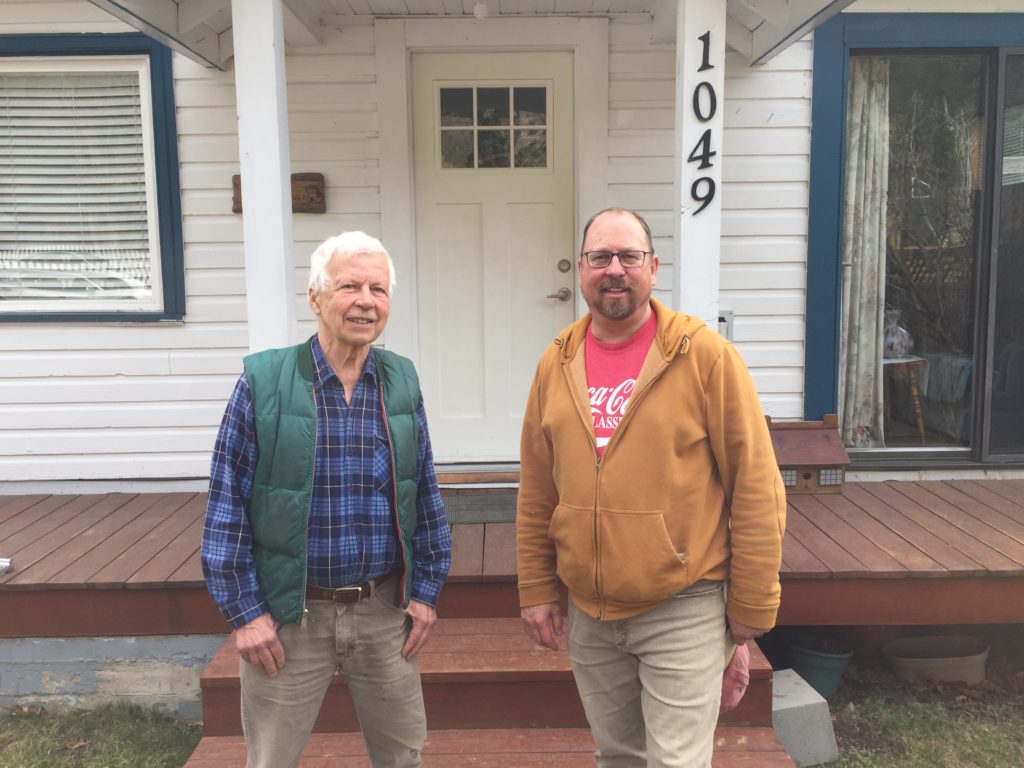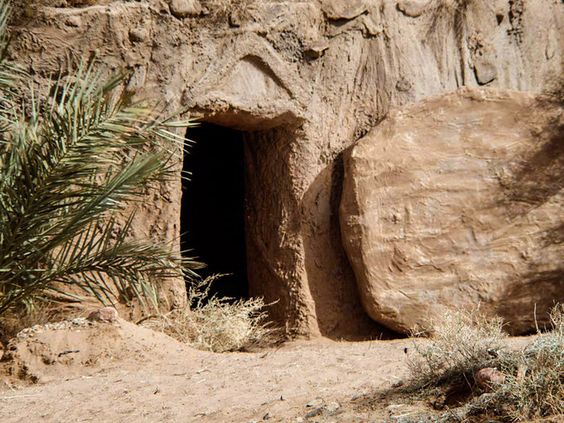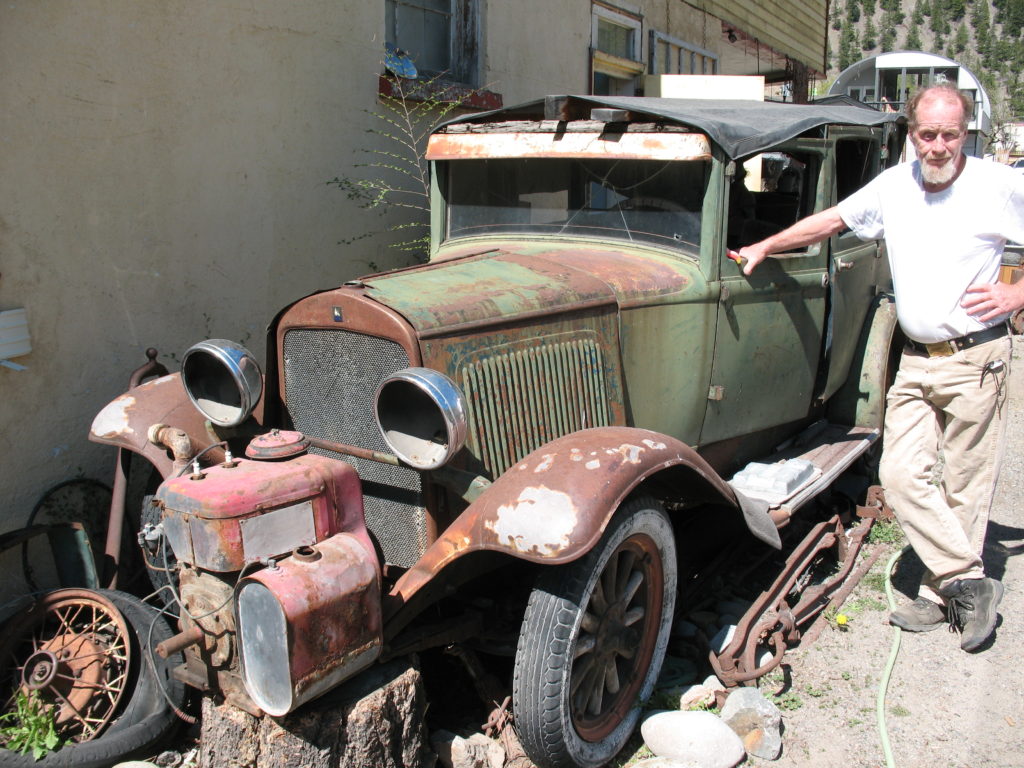
When Rod Moncrieff stopped in Hedley for coffee 27 years ago, it was the low rumble of his Harley Davidson and the red beard extending well down his chest that people noticed. Doug Smith, then a local resident, saw him looking at a large two story building with a ‘for sale’ sign at the corner of Scott & Haynes streets. Scrutinizing the beard and powerful bike, he said, “you’ll fit in fine here.” There was still at least a whiff of the town’s earlier gold mining atmosphere, and Rod was captivated. He bought the building, a combination of home, shop and storage facility. When he displayed a biker gang flag, people wondered what to expect from this new neighbour. Since then Rod has put his stamp on the property and is well accepted in the community. He was subsequently joined by Valerie and her daughter Alison.
Over the years, Rod has assembled an eclectic assortment of items, inside and out. Until he gave Linda and me a tour last week, I thought he was just one more hoarder of worthless junk, a man with both feet mired in the past. Pointing to a number of items lying together on the ground he said, “there’s a car in there.” Then, “Most of what you see is for sale. This morning I sold a car part.” Picking up a miniature pitcher, he said, “I bought this for fifty dollars from Mike Orlowski. It came out of the Similkameen Hotel which burned down in 1916.”
I had long been curious about the elderly dishevelled Plymouth standing close to the building, seemingly abandoned. A sedan, it still exudes character and personality that is unmatched in current vehicles.
I knew his building had once been an automotive garage operated by Gerald Burr. When I mentioned this Rod said, “At one time it was actually a Plymouth dealership. The town was a bustling centre then, with a much greater population.” He considered for a moment, then said, “the first Plymouth was produced in 1928 to compete with Ford’s low cost Model A. It was introduced to the public at Madison Square Garden with aviator Amelia Earhart at the wheel. She and her plane disappeared in 1937 while flying across the Pacific Ocean.”

Rod’s Plymouth came out in 1929. There were several other models, including a stylish coupe with a rumble seat. “My car was owned by a man living in Hedley,” Rod explained. “I bought it because of the dealership having been here. It’s a 4 cylinder, with 45 horsepower. The motor won’t start but I can turn it over with a hand crank. A guy offered me $4,000 for it just this morning. If he gets serious I’ll sell it.”
Rod probably could restore the car if he chose to. He’s familiar with machinery and knows how to weld. At one time he worked for a company that built trucks using sheet metal. Later he owned “Patches”, a backyard motorcycle shop in O.K. Falls. “I got to know a lot of Hell’s Angels,” he said. “I fixed plenty of Harley’s for them.” This conjured up another memory. “My cousin married a member of the Grim Reapers in Alberta. Some years ago he was involved in a shooting and is on parole for life. He’s changed his ways and is now a Seventh Day Adventist minister.
Placing a hand on the Plymouth, he said, “this car was driven from Saskatoon to Keremeos. Two years ago I talked with the driver’s son. He told me he has three boxes of parts and will drop them off when he comes to Hedley again.”
Rod’s 74 years have been interspersed with a number of adventures, some he might prefer to forget. A barefoot water skiing episode went wrong, leaving him with a crushed vertebrae. While in the navy he was trained in weapons and demolitions. Later, working with explosives at a gold mine near Yellowknife a defective blasting cap fired and he lost part of his face. He spent 4 months in the hospital undergoing surgeries to his face and hand.
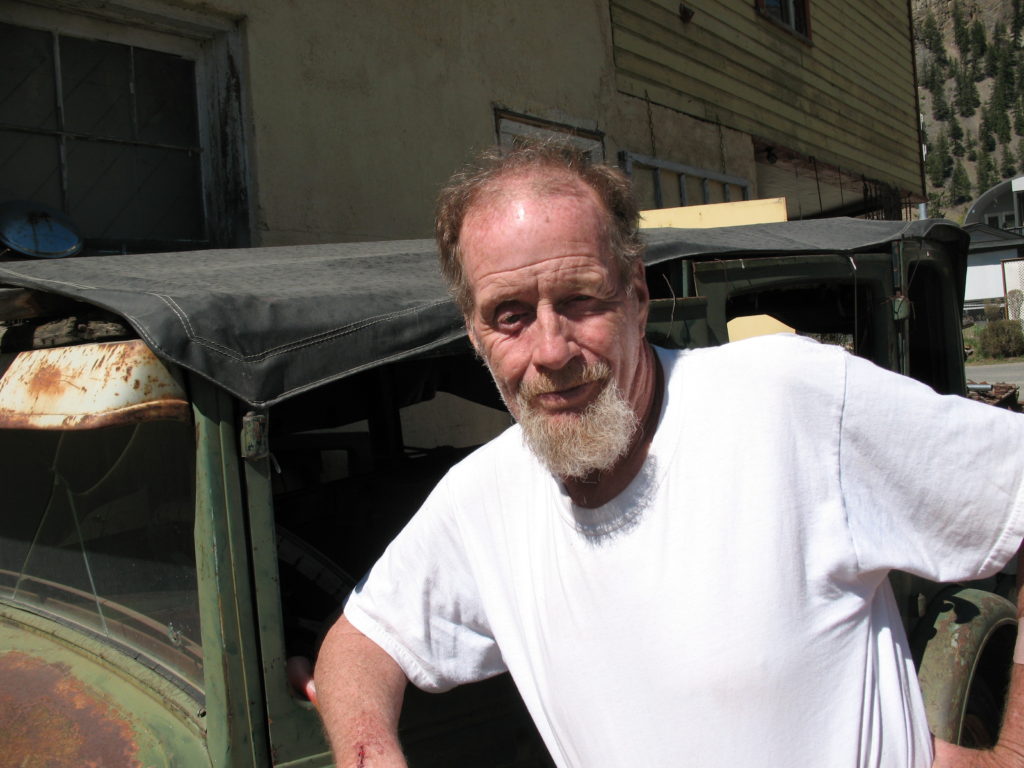
At this time he seems done with adventures. He sold the Harley to pay taxes, the flag has been taken down, his face was nicely restored, and the beard has shrunk. He’s devoted to Valerie and speaks with admiration of Alison’s accomplishments. Like the aging Plymouth, Rod’s life has taken on an aura of character.

